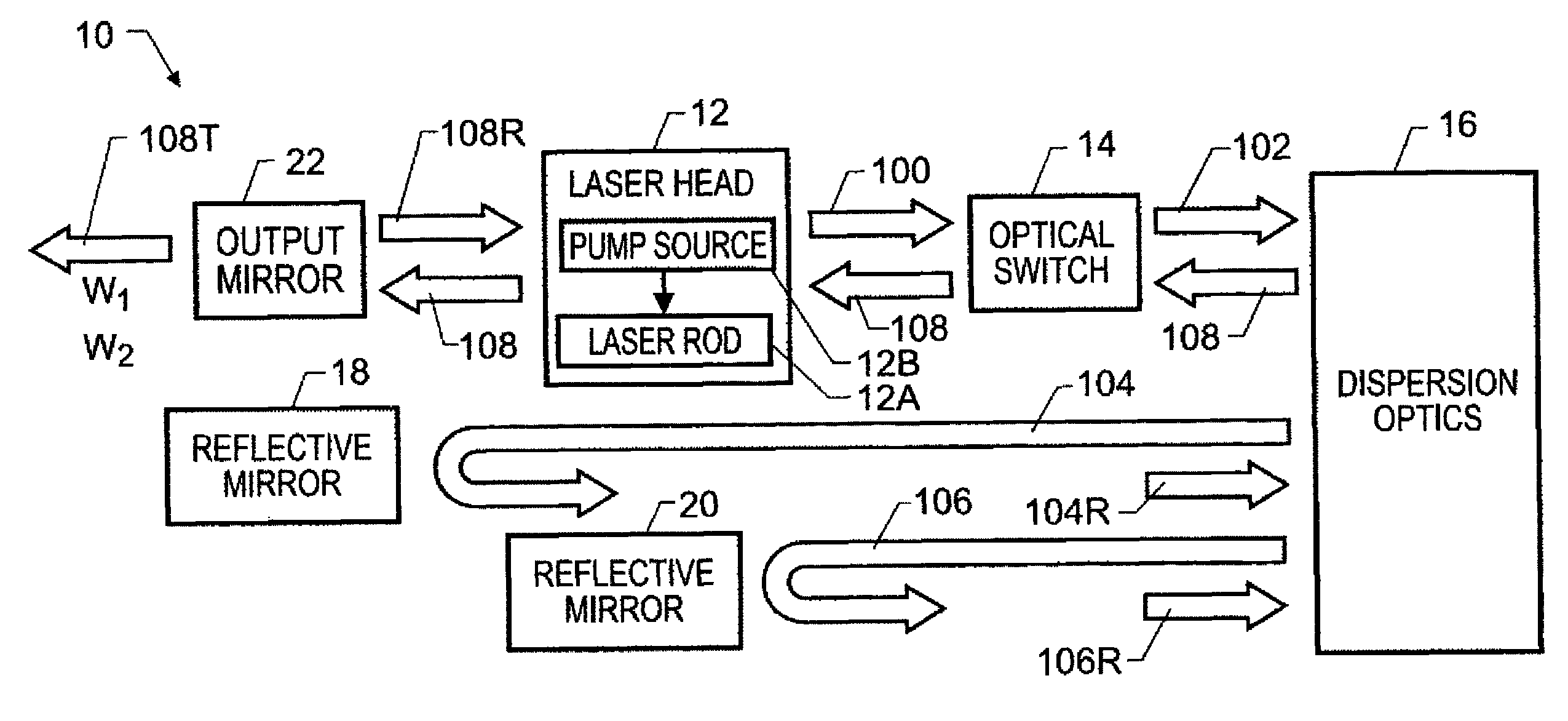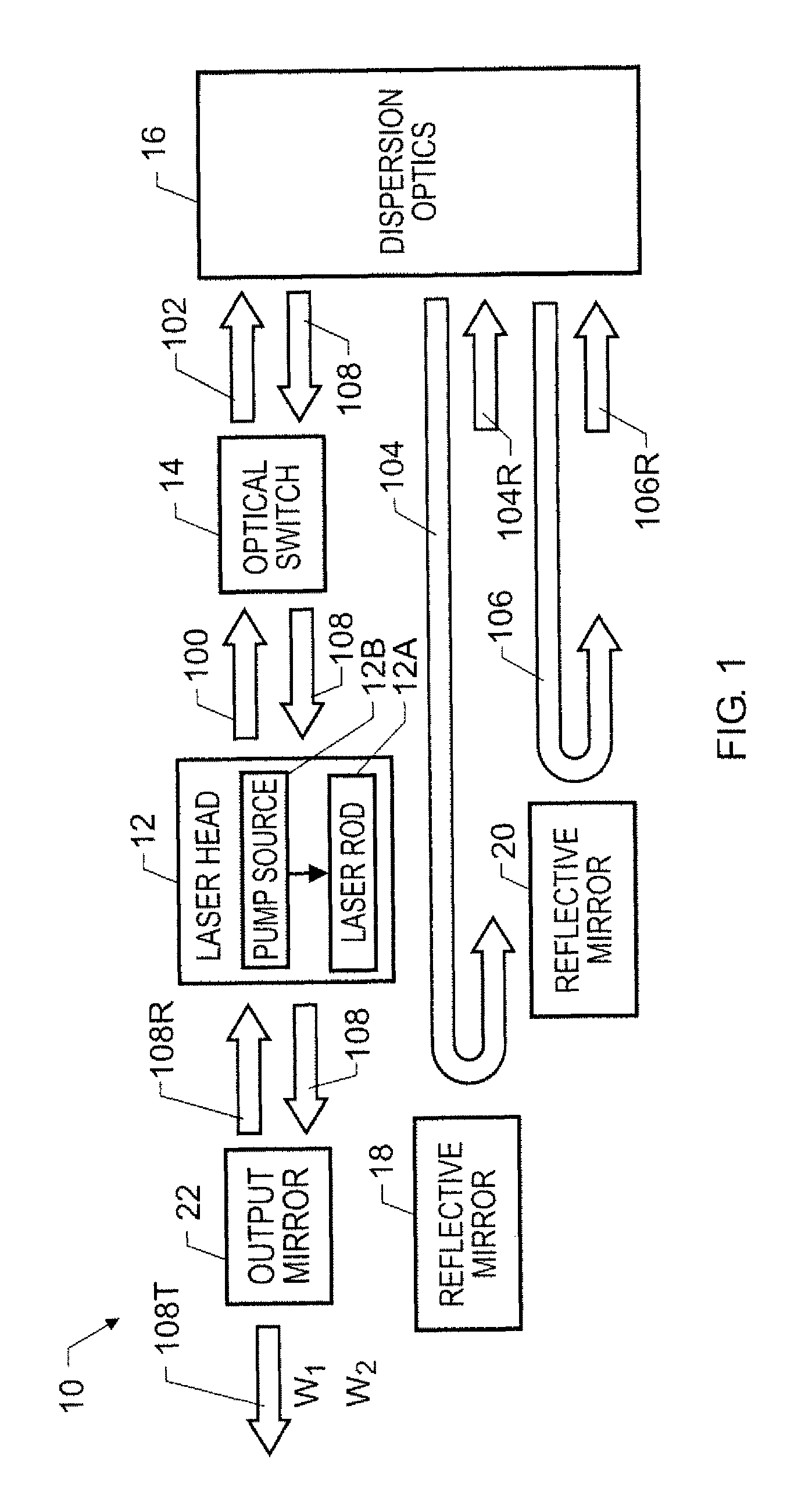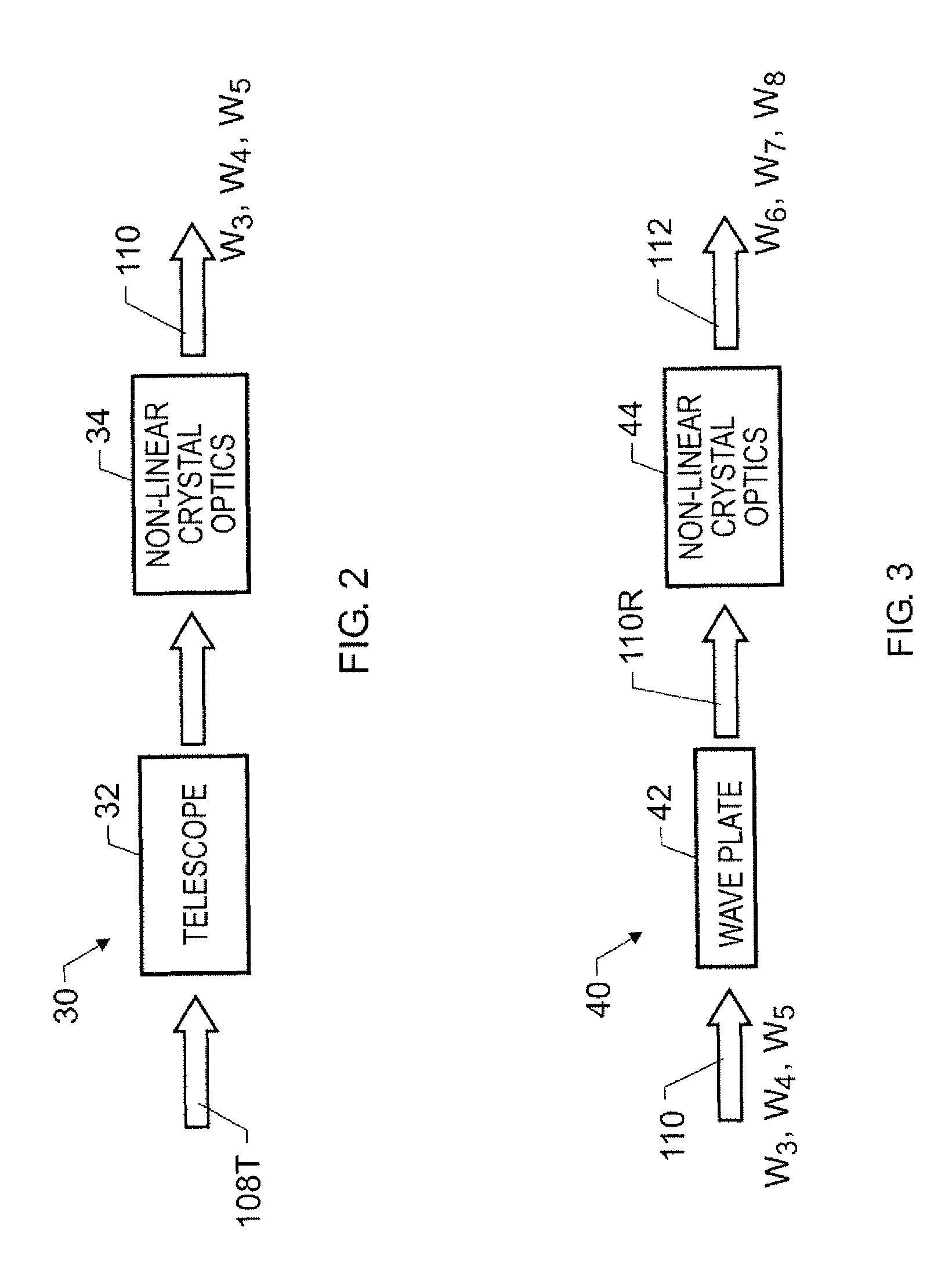Multiple-wavelength tunable laser
a laser and multi-wavelength technology, applied in the direction of laser details, optical resonator shape and construction, electrical equipment, etc., can solve the problems of complicated replacement and disposal, short life of dyes, and most present serious drawbacks, and achieve the effect of simple and safe manner
- Summary
- Abstract
- Description
- Claims
- Application Information
AI Technical Summary
Benefits of technology
Problems solved by technology
Method used
Image
Examples
Embodiment Construction
[0017]Referring now to the drawings and more particularly to FIG. 1, a multiple-wavelength tunable laser in accordance with an embodiment of the present invention is show and is referenced generally by numeral 10. In the illustrated embodiment, tunable laser 10 simultaneously produces synchronous laser pulses at two distinct wavelengths W1 and W2 that can be in the infrared spectrum. However, as will be apparent to one of ordinary skill in the art, the principles of the present invention can be readily extended to simultaneously produce synchronous laser pulses at more than two wavelengths.
[0018]Tunable laser 10 includes a laser head 12 and a number of optical components that define a laser resonator. Laser head 12 typically includes a rod 12A of lasing material and a pump source 12B (e.g., a flash lamp) as would be understood in the art. For example, in terms of generating laser pulses at multiple infrared wavelengths, rod 12A is typically a neodymium-doped yttrium aluminum garnet ...
PUM
 Login to View More
Login to View More Abstract
Description
Claims
Application Information
 Login to View More
Login to View More - R&D
- Intellectual Property
- Life Sciences
- Materials
- Tech Scout
- Unparalleled Data Quality
- Higher Quality Content
- 60% Fewer Hallucinations
Browse by: Latest US Patents, China's latest patents, Technical Efficacy Thesaurus, Application Domain, Technology Topic, Popular Technical Reports.
© 2025 PatSnap. All rights reserved.Legal|Privacy policy|Modern Slavery Act Transparency Statement|Sitemap|About US| Contact US: help@patsnap.com



